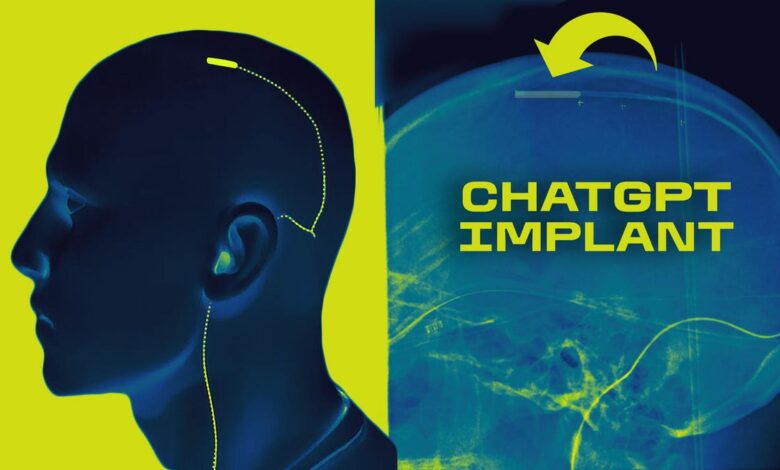What it’s like to use a brain implant with ChatGPT – Video

This brain implant is now partially powered by chat GP T. It’s designed to help people with paralysis communicate faster, easier, and more independently on their digital devices using only their thoughts. We spoke to Synchron founder Tom Oxley and pioneering patient Mark, who features in the demo video, to find out what it’s like to use where is the integration of AI and brain implants headed and what comes next? It’s an astonishing realization that the mind can do what we do with it. Probably the coolest thing I’ve ever been involved with. Mark is one of only 10 people in the world to receive a Synchron brain computer interface BC. So, as part of the company’s clinical trials, I’m an A OS patient. I was currently diagnosed in 2021. I can barely use my hands. Synchron BC is designed to make it easier for people like Mark to continue using their phones, computers, and other devices independently by connecting those devices directly to their brain. I could talk to you about. The addition of AI is seen as a way to make communication on these devices faster by taking in relevant context. Like what was said last in a conversation and anticipating responses that a person might want to respond with instead of typing out individual words, it gives me options for parts of sentences and with one click I can fill that all in. Mark has a refresh button that he can use if he doesn’t like his AI responses. And he’s noticed that as he’s used the AI, it seems to have gotten better at giving him options that are more in line with things. He might say it drops the occasional F-bomb, which I do quite a bit now and then. So, Synchron CEO Tom Oxley tells me that the company has been experimenting with different AI models for about a year. But the release of chat GP T 40 in May brought with it some interesting new capabilities. Open AI showed a man who was visually impaired using the system to navigate the road. It’s coming your way on the left side of the road. Get ready to keep it going. You could use audio, visuals, and text and they can have them all presented to you at the same time. What’s the next thing you want to do? And I’m predicting it’s this based on the information because I could hear what your partner just said. I just saw the text come in and then the BC I navigates through the prompts and then chooses which prompt to make the next move. Ley says the chat GP T integration only requires a software update for synchron. So there’s no need to change the hardware or get new implants. We’re trying to get all the infer and, and compute out of the body so that we can continue to offer upgrades. Oxley also says the company isn’t locked into a particular grand language model in the rapidly changing field of AI. The systems that best meet the needs of their patients are what Synchron will adapt. We want to enable our users to engage in natural speeds of conversation. Often people with disabilities or motor disabilities are left behind. We want to bring them back into the conversation using digital means, stare at them and think about moving for a long time and it will start to zoom in. Yeah and let go. So you’ve made a click, your first click with your brain. Synchron BC is implanted into a blood vessel near the motor cortex of the brain, the part of our brain that controls our movements to make a click or a selection with the synchron BC users think about moving and the BC interprets those thoughts and sends them wirelessly to perform the desired action on the user’s device. Fun fact, Synchron BC is unique in that it is based on already existing medical technologies like stents, catheters, which allows it to be placed in the brain without the need for open brain surgery. Imagine having to ask someone to pick up your phone to write a message or do something. You always have to look through the lens of another person. One of the big goals is to be able to use the technology yourself. I would encourage anyone watching this video who may be in a similar situation where they are paralyzed or unable to use their own technology. There is hope that synchro BC will cost between $50,000 and $100,000, similar to the cost of other implanted devices such as pacemakers or cochlear implants. There are no implantable brain computer interfaces that have received FDA approval yet. Synchron hopes to change that, although the process could take a few years. Synchron Stro BC is already making an impact. I wake up in the morning with two choices. I can wallow in self pity for my situation or I can do something about it, it won’t be a cure, but whatever I can do to help others. I guess that’s why we’re here, as always. Thank you so much for watching. I’m your host, Jessie Earl. See you next time with the family.




